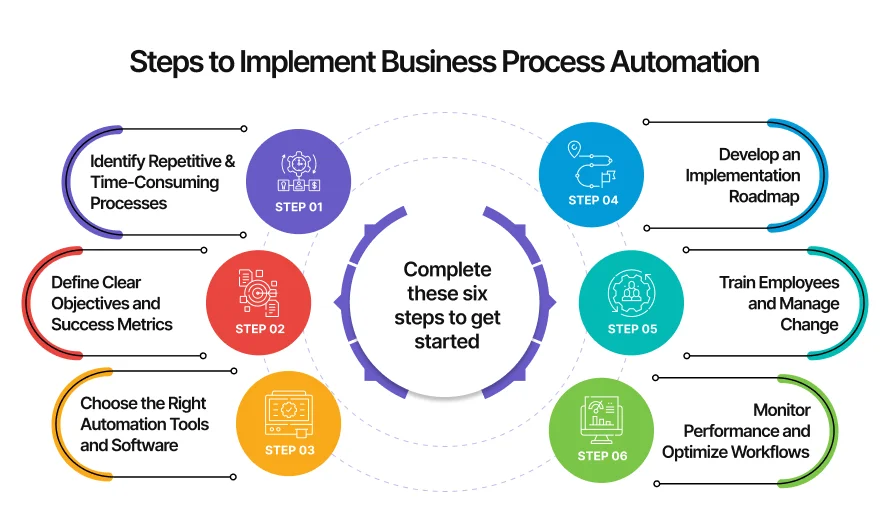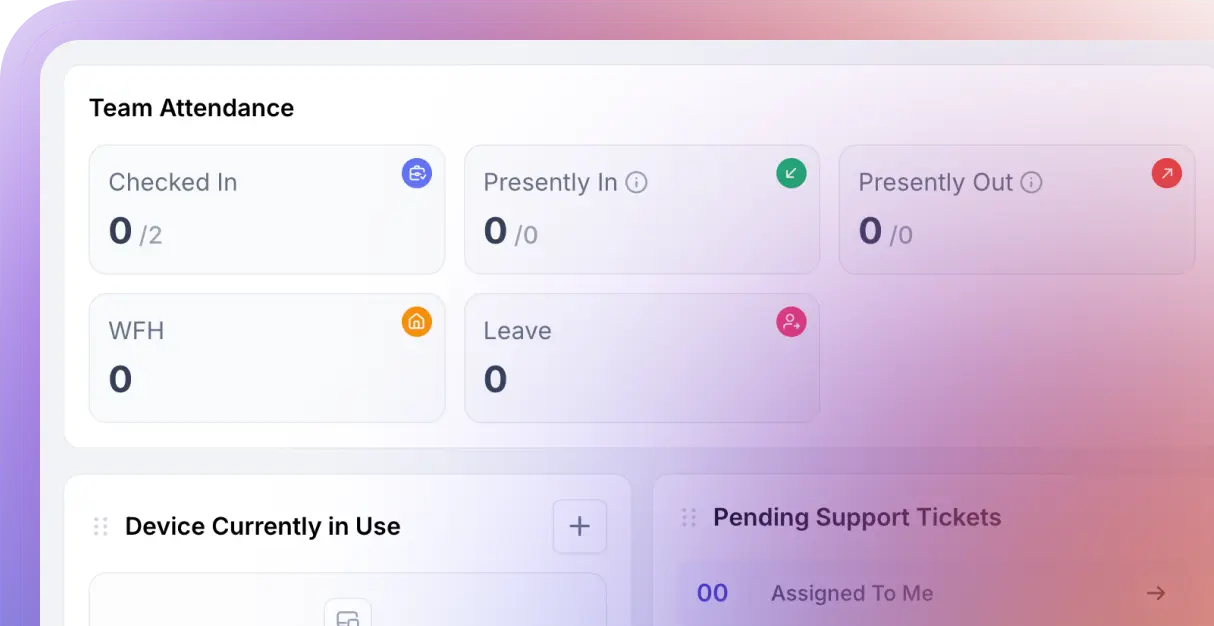Business operations are undergoing a fundamental shift; automation is no longer a futuristic concept but a present-day necessity. As technology advances at an unprecedented pace, companies that embrace automation will redefine efficiency, scalability, and innovation.
From AI-driven analytics to robotic process automation (RPA), businesses are streamlining workflows, reducing costs, and making smarter, faster decisions. However, automation isn’t just about doing things faster, it’s about doing them better. It empowers organizations to optimize supply chains, improve customer experiences, and unlock new growth opportunities.
As we look ahead, one thing is clear: business automation will separate industry leaders from those struggling to keep up. But is your business ready to adopt the transformation? You have no idea? This blog tells you about business process automation and its impact, helping you adopt trending technologies and propel your business growth forward.
Key Takeaways
- Business Process Automation streamlines tasks and accelerates workflows.
- BPA improves efficiency, standardizes processes, and enhances collaboration.
- Hyperautomation and AI make BPA a strategic growth driver.
- Implement BPA by mapping workflows, automating processes, and monitoring performance.
- CollabCRM automates workflows, integrates systems, and delivers real-time insights for IT companies.
What is Business Process Automation?
Business Process Automation is the use of technology to automate and streamline repetitive, manual business tasks and processes to improve efficiency, reduce errors, and save time. By automating routine operations, businesses can focus more on strategic goals, enhance productivity, and optimize their workflows.
Key Components of Business Process Automation:
Automated Workflow: BPA helps in mapping out business processes and creating automated workflows that handle tasks like data entry, approvals, and notifications without human intervention.
System Integrations: BPA often involves integrating various software tools and platforms to ensure seamless data exchange between systems, such as CRM, ERP, and financial tools.
Data Handling: With BPA, businesses can automatically process large volumes of data, making decisions based on predefined rules and reducing the need for manual data entry or analysis. Task Automation: Routine tasks, such as sending emails, generating reports, updating records, or scheduling appointments, can be automated to free up employees’ time for higher-level activities.
How Is Business Process Automation Impacting Industries and Changing the Workflow?
The global business process automation market is projected to grow at a CAGR of 11.4%, increasing from $14.2 billion in 2023 to approximately $30.2 billion by 2030.
Organizations are leveraging automation technologies such as Robotic Process Automation (RPA), Artificial Intelligence (AI), Machine Learning (ML), and Cloud-Based Automation to streamline their operations. Let’s explore how different industries are adopting BPA and the impact it has on their workflows.
1. Information Technology
IT teams leverage automation to improve software development, infrastructure management, and cybersecurity operations. DevOps pipelines integrate automated testing, deployment, and monitoring, reducing errors and speeding up software releases.
Cloud-based automation tools streamline server provisioning, patch management, and disaster recovery, ensuring greater system reliability. Additionally, AI-driven threat detection and automated incident response enhance cybersecurity, allowing IT teams to respond faster to potential risks while minimizing human intervention.
2. Banking and Finance
The banking and financial sector has adopted automation to enhance fraud detection, streamline customer onboarding, and expedite loan processing. AI-driven algorithms are used for risk assessment and credit scoring, while robotic process automation (RPA) handles tasks like invoice processing and account reconciliation, ensuring faster and more accurate financial transactions.
3. Healthcare
Similarly, healthcare is witnessing significant automation in areas, including patient record management, appointment scheduling, and insurance claims processing. AI-powered chatbots are enhancing patient interactions, while automation in medical billing and compliance management reduces administrative burdens on healthcare professionals.
4. Retail and eCommerce
The retail and e-commerce industry is also heavily investing in BPA to optimize supply chain management, automate order fulfilment, and personalize customer engagement. AI-driven demand forecasting ensures proper inventory levels, while warehouse robotics and automated logistics improve operational efficiency. Additionally, businesses use AI-powered chatbots for real-time customer support, improving response times and overall service quality.
5. Manufacturing
In manufacturing, automation plays a crucial role in robotic assembly lines, predictive maintenance, and quality control. IoT-enabled sensors predict equipment failures before they occur, minimizing downtime and enhancing production efficiency. AI-based quality control systems ensure that products meet consistent standards, reducing waste and increasing profitability.
6. Human Resources
The human resources (HR) sector is using automation to streamline recruitment, employee onboarding, payroll processing, and performance tracking. AI-driven tools now screen resumes, schedule interviews, and even analyze employee sentiment to improve workplace satisfaction.
As automation continues to evolve, businesses across all industries are recognizing the importance of adopting BPA to remain competitive. The ability to reduce manual intervention, improve accuracy, and enhance decision-making is making automation a necessity rather than a luxury.
Future Prospects of Business Process Automation (BPA)
Business Process Automation (BPA) is becoming a key driver of business growth, scalability, and competitive advantage. The future of BPA will be shaped by advancements in AI, hyper-automation, cloud computing, and data-driven decision-making, all of which will redefine how businesses operate and scale. Here are the key drivers:
1. Hyper-automation
Businesses that adopt hyper-automation, the combination of AI, machine learning, robotic process automation (RPA), and data analytics, will gain a significant edge over competitors. Hyper-automation allows companies to automate end-to-end business processes, eliminating bottlenecks and increasing agility.
2. Increased Adoption of Cloud-Based Automation
With businesses increasingly moving to the cloud, cloud-based automation solutions will become the norm. These solutions provide scalability, flexibility, and cost-effectiveness, allowing businesses to automate processes without investing in expensive on-premise infrastructure. Cloud automation enables remote work capabilities, allowing teams to collaborate and access automated workflows from anywhere.
3. Intelligent Process Automation (IPA)
BPA is evolving beyond automating repetitive tasks to assisting in strategic decision-making. Intelligent Process Automation (IPA) combines AI, RPA, and data analytics to help businesses make real-time decisions based on insights derived from automated processes.
4. Internet of Things (IoT) and Smart Devices
The future of BPA will see deeper integration with IoT (Internet of Things) and smart devices. Businesses will use automation to manage interconnected systems, automating workflows based on real-time sensor data.
5. Personalized Customer Experiences
Customer experience will be a key area where BPA makes a significant impact. AI-driven automation will allow businesses to deliver hyper-personalized experiences by analyzing customer behavior, preferences, and purchase history.
How Does Business Process Automation Drive Growth and Success?
With business process automation, businesses can concentrate on expanding operations, driving innovation, and enhancing customer satisfaction, ultimately boosting profitability and securing a competitive edge. Here’s how BPA fuels business growth and long-term success:
1. Increased Efficiency and Productivity
Automation eliminates time-consuming manual tasks, allowing employees to focus on high-value activities. Tasks such as data entry, invoicing, payroll processing, and customer service inquiries can be automated, reducing human intervention and speeding up workflow completion. It not only enhances productivity but also improves job satisfaction by removing repetitive tasks from employees’ workloads.
2. Cost Savings and Resource Optimization
By automating business processes, companies can significantly cut operational costs. Reduced reliance on manual labor leads to lower staffing costs, fewer errors, and less resource wastage. Automation also helps optimize resource allocation, ensuring that human and financial capital is directed towards areas that generate maximum value for the business.
3. Improved Accuracy and Reduced Errors
Human errors in data entry, financial transactions, and reporting can lead to costly mistakes. BPA minimizes these errors by enforcing standardized workflows and eliminating the risks associated with manual handling. Automated systems ensure accuracy and compliance, thereby enhancing the reliability of business operations.
4. Enhanced Customer Experience
BPA helps businesses provide quick responses to customer inquiries, automated order processing, and personalized interactions through AI-driven chatbots. This leads to improved customer engagement, higher retention rates, and a better overall brand reputation.
5. Better Decision-Making with Real-Time Data Insights
Automation tools can collect and analyze large volumes of data in real time, providing actionable insights for decision-making. Businesses can leverage automated analytics and reporting to track performance metrics, forecast trends, and make informed strategic decisions. This data-driven approach ensures continuous growth and a competitive edge in the market.
6. Scalability and Business Growth
As businesses expand, managing processes manually becomes inefficient and unsustainable. BPA provides scalability by allowing businesses to handle increasing workloads without a proportional increase in workforce or operational costs. Automated workflows ensure seamless growth by maintaining efficiency even as the business scales.
Steps to Implement Business Process Automation Initiatives
Implementing Business Process Automation (BPA) requires a structured approach to ensure efficiency, cost-effectiveness, and seamless integration into existing workflows. Below are the key steps to follow for successful automation.

1. Identify Repetitive and Time-Consuming Processes
Recognize which business processes are slowing down productivity. Companies should analyze their daily operations to pinpoint tasks that are manual, error-prone, or take up significant time. Common areas for automation include data entry, invoice processing, customer support ticketing, and employee onboarding. You can use process mapping tools to visualize workflows and highlight inefficiencies that automation can address.
2. Define Objectives
Outline the core achievements, whether it’s improving efficiency, reducing costs, increasing accuracy, or enhancing customer experience. Establish Key Performance Indicators (KPIs) such as process completion time, error reduction, or employee productivity to measure the success of automation efforts.
3. Choose the Right Automation Tools and Software
The choice of tools depends on the complexity of the tasks, the need for integration with existing systems, and future scalability. Businesses can choose from various automation solutions: Robotic Process Automation (RPA) for repetitive tasks, workflow automation platforms for approvals and processes, and AI-powered tools for intelligent decision-making.
4. Develop an Implementation Roadmap
Create a well-defined roadmap that prioritizes processes for automation, sets timelines, assigns responsibilities, and assesses potential risks. You can start with a pilot project and test automation on a small scale before rolling it out across the organization.
5. Train Employees and Manage Change
Workers may fear that automation will replace jobs, leading to reluctance to embrace new technologies. To ensure smooth adoption, educate employees about the benefits of automation, such as reducing repetitive tasks and allowing them to focus on strategic, high-value work. Provide hands-on training, workshops, and clear documentation to make the transition easier.
6. Monitor Performance and Optimize Workflows
Track pre- and post-automation performance using real-time analytics and reporting tools. Gathering employee and customer feedback helps identify areas for improvement. If bottlenecks or inefficiencies arise, workflows should be optimized to maximize the benefits of automation. Regular performance reviews ensure that automation continues to meet business objectives.
Bottom Line
Automation will redefine how businesses create value, scale, and compete in the decade ahead. Organizations that embrace it will cut inefficiencies, unlock innovation, and move with the speed their markets demand. CollabCRM empowers this shift, uniting people, processes, and technology into a single intelligent system that drives smarter decisions and sustainable growth. With CollabCRM, businesses adapt to the future of automation and lead it.
How CollabCRM Helps IT Companies Adapt to Automation
CollabCRM empowers IT companies to embrace automation and make processes efficient, transparent, and scalable. It integrates workflows, project management, and client interactions into a single platform, eliminating manual handoffs and reducing errors. Recruitment, task allocation, and project tracking run seamlessly as automation handles routine tasks, allowing teams to focus on strategic initiatives.
The platform delivers real-time insights and analytics, enabling managers to monitor performance, identify bottlenecks, and make data-driven decisions. Multi-round interviews, candidate tracking, and offer management in the recruitment module automate the hiring process and shorten hiring cycles. CollabCRM connects disparate systems, ensuring end-to-end process automation and enhancing collaboration across teams.
IT companies accelerate workflows, optimize resource utilization, and respond faster to market changes using CollabCRM, turning automation into a strategic advantage for growth.
FAQs on Automation
AI automates repetitive tasks, provides real-time insights for better decision-making, and optimizes workflows to improve efficiency. It enhances customer experience through personalization and faster response times, while also enabling businesses to innovate by identifying new opportunities and smarter ways to deliver products and services.
There are four main types of automation. Basic automation that handles simple, repetitive tasks like notifications or data entry. Process automation that streamlines end-to-end workflows such as approvals and task assignments. Integration automation that allows systems and applications to communicate without human intervention. Cognitive automation that uses AI and machine learning for advanced tasks like decision-making, natural language processing, and predictive analytics.
The future of automation will focus on hyperautomation, combining AI, RPA, and analytics to handle complex processes end-to-end. It will promote human-AI collaboration, allowing people to focus on strategy and creativity while AI manages execution. Automation will become more industry-specific, fully integrated, and scalable, driving efficiency, innovation, and competitive advantage for businesses.
The biggest challenge in automation is managing change and adoption. Organizations often face employee resistance, integration difficulties with existing systems, high initial costs, and concerns over data quality and security. Additionally, skill gaps require ongoing training and upskilling to ensure teams can use automation effectively and sustainably.





